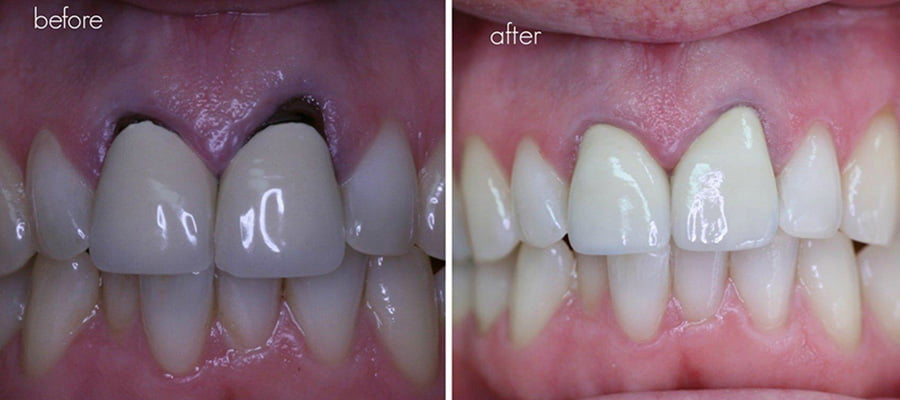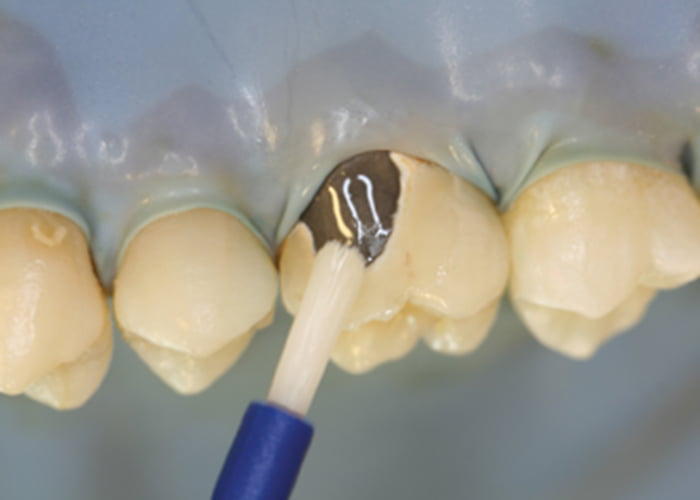A dental treatment called a crown completely covers or encircles a tooth or dental implant. When a significant cavity jeopardizes the continued health of a tooth, crowns are frequently required. Crowns are designed to last five to twenty years. Unfortunately, they might sustain damage during this time. A serious dental emergency is a crack in a tooth that is under a crown. The sooner you visit a dentist, the better your chances are of keeping your natural tooth. Although a cracked dental crown can be unsettling, there is no need to fear. What you need is a dental crown repair. Continue reading the article below for more information.
How Damaged Is Your Crown?
The sort of damage to your crown may not seem to matter, but it can influence whether it needs to be replaced or repaired. It might also mean that the same incident that hurt the crown also hurt some of the other teeth. Crown damage essentially belongs to one of the following groups:
- Cracked: A significant horizontal or vertical crack on a crown should be obvious upon inspection.
- Hairline fracture: You might not even be aware of a very small break until you see the dentist, but it might be simple to fix.
- Chipped: A little or significant portion of the crown has been severed.
- Broken: The crown may be intact or broken, but it is falling off and is no longer in good working order.
Cracked Crown Symptoms
Mild symptoms that intensify over time may result from a tooth crack under a crown. Among the signs of a broken tooth are:
- Occasionally occurring discomfort while eating
- inflammation near the gums
- Intolerance to meals that are hot, cold, spicy, or sweet
Make a dentist appointment as soon as you can if you believe you have a cracked tooth. When it comes to treatment, time is of the essence because it might mean the difference between maintaining your natural tooth and losing it.
See more: The pros and cons of a dental crown

What to Do Before You See a Dentist About a Broken Crown
In most cases, a fractured crown is not a dental emergency unless it has left the teeth with jagged edges that could sever your cheeks or tongue.
If not, you ought to be able to control the condition until you can visit the dentist.
There are a few things you can do in the interim:
- By thoroughly inspecting a mirror, you may first evaluate the damage and determine whether the crown is still in place or has come off. Run your finger along the teeth at this point to see if it has sharp edges.
- You must remove the crown if it is not jagged but is not firmly fastened to avoid swallowing it. If you think you ingested it, it probably passed your system without any negative effects.
- After the examination, rinse your mouth with warm water to get rid of any remaining microscopic crown particles. If the crown still looks to be intact, you can now momentarily reconnect it.
- Clean the crown inside and out with a soft toothbrush and toothpaste before reattaching it to get rid of any debris or old cement. The crown should then be reattached after applying a little dab of temporary tooth cement or toothpaste to the area. It is crucial to fit it properly in order to prevent harm to the tooth or nearby teeth.
- Call your dentist right away to schedule an appointment to have the crown properly fixed, and let them know how the crown is doing — whether you’ve managed to reattach it or not.
Your Options for Fixing a Broken Crown
Listed below are some solutions your dentist has for repairing a dental crown.
Dental Bonding
Sometimes a fractured dental crown can be repaired using the same technique that can be used to make minor adjustments to natural teeth. For instance, bonding could be used as an alternative to crown replacement if there is only a hairline fracture. The dentist adds a tooth-colored composite resin to the crown, shapes it to fix the damage, and cures it under a UV light in a quick, painless procedure called bonding.
Replacement Crown
The dentist might decide that the crown has to be replaced soon anyway or that it is too severely damaged to be saved. In that situation, he will replace the old crown after first removing the fractured one, if it is still present. The dentist will numb the gums before removing the previous crown to minimize pain. In order to weaken the cement, he might also use an adhesive.
Then, he has two options: he can use a small rotary tool to cut the crown into portions, which he will then remove one at a time, or he can make a small hole in the crown to create leverage for breaking the cement’s seal and lifting the crown off. The dentist will then clean the tooth to remove dirt and decay, or if there is considerable deterioration, may even perform a root canal. The dentist will then take an imprint of your teeth for the new crown using either gummy impression material or a digital scanner. You will be given temporary crowns that are considerably easier to remove than the damaged permanent crown until it is prepared.
Read more: Which are the 4 Types of Dental Bridges?
Dental Onlay
A dental onlay, often known as a “partial crown,” could be a good substitute for a brand-new crown.
A dental onlay is made in a lab beforehand from resin, porcelain, or gold, and is then bonded to the tooth to fit into the grooves and cover the cusps.
Compared to using a crown, this technique enables the tooth structure to be preserved to a greater extent. If you’ve had your crown for a time, you might find that an onlay will do in place of a crown now that the performance of the materials has improved enough in recent years.
Recement the Crown
The dentist can also put the crown back on your tooth after cleaning and inspecting it if it’s still there and it’s not broken or chipped.
If the X-ray showed that the old cement was still fitting well with the tooth structure, he would probably need to remove it from either your tooth or the old crown, or both. If so, however, this alternative might be rather straightforward.
Dental Implant
The entire tooth may need to be taken and replaced with an implant in extreme circumstances if the crowned tooth is too weak or decaying to support a new crown. Before the gums are given a small slit to receive the titanium post that is lodged into the jaw to act as the tooth root, this process requires anesthetic, either local or general. The restoration (crown), which has the appearance and chewing function of a natural tooth, will be placed on top of it.
You Are Welcome Here
If you are looking for dentists in Marysville, Ohio, and need dental crown repair, please don’t hesitate to contact us through the Dentist For Life website to schedule an appointment. We are here to answer any of your questions and are always happy to help.



